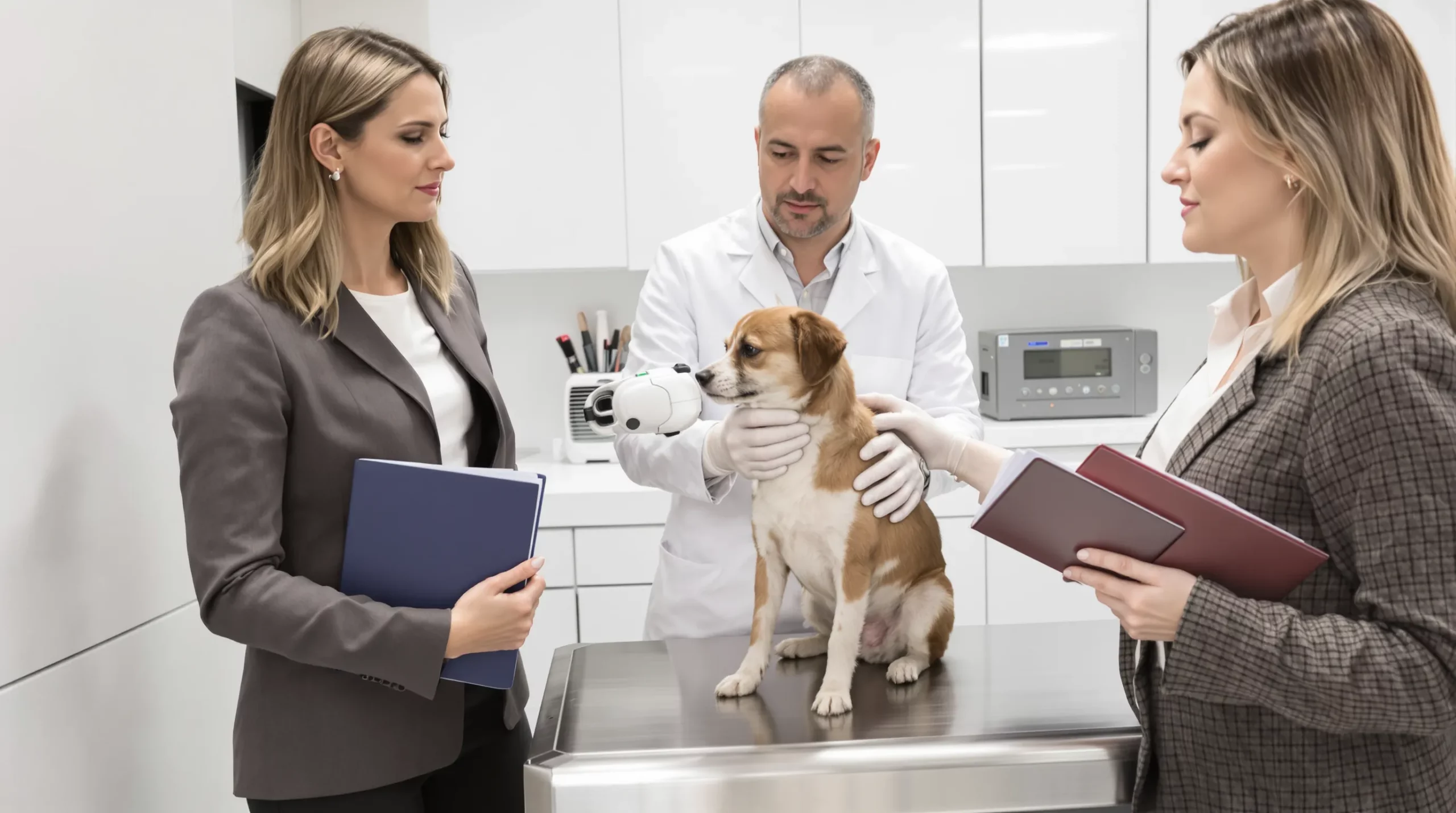Bringing Your Pet to France: Veterinary and Customs Rules for Visa Holders

Moving to France already involves a mountain of paperwork; adding a four-legged family member can feel overwhelming. Yet, with the right timeline and documents, bringing your dog, cat or ferret across French borders is perfectly manageable—even if you are still juggling visa appointments and residence-permit filings. This guide distills the 2025 EU and French veterinary rules, customs formalities and post-arrival steps every visa holder should know before boarding the plane with a pet.
1. Check Whether Your Pet Is Eligible
France follows Regulation (EU) 576/2013, which limits companion animal imports to:
- Dogs (including assistance dogs)
- Cats
- Ferrets
Other mammals, birds, reptiles and rodents fall under separate CITES or wildlife health regimes and are not covered in this guide. A maximum of five pets per traveller is allowed under the “non-commercial movement” regime unless you can prove the relocation is tied to a move of residence.
Breed restrictions
France bans the import of so-called Category 1 attack dogs (chiens d’attaque):
| Category | Breed examples | Import status |
|---|---|---|
| 1 | Pit Bull type, Boerboel, unregistered Tosa type | Prohibited |
| 2 | Pure-bred Tosa, Rottweiler and dogs resembling Rottweiler | Allowed if muzzled, leashed and owner holds a permis de détention |
Source: French Rural Code, Art. L211-12.
2. Build Your Veterinary Timeline
The table below shows the minimum lead time if you are relocating from a “listed” country such as the UK, USA, Canada, Australia, India or Brazil. Add three extra months if your origin country is unlisted (e.g., most of Africa or Asia), because a rabies antibody titration and waiting period are mandatory.
| Step | Earliest age | Lead time before travel | Key document |
|---|---|---|---|
| ISO 11784/11785 microchip implantation | 12 weeks | Day -90 | Microchip certificate |
| Rabies vaccination (injected after microchip) | 12 weeks | Day -90 | Vaccine record |
| 21-day immunity wait | N/A | Day -69 to Day -48 | — |
| Tapeworm treatment (dogs from UK, Ireland, Malta, Finland, Norway) | N/A | 24–120 h | Vet statement in health cert |
| EU Animal Health Certificate (AHC) issued | N/A | ≤10 days | Form EU HCD-DP |
Tip: Keep all stamps and stickers intact; French border vets may reject altered pages.

3. Booking Flights and Choosing an Entry Point
Pet dogs, cats and ferrets must arrive through a designated Travellers’ Point of Entry (TPE) that has on-site veterinary staff. The main approved airports in 2025 are Paris Charles-de-Gaulle, Paris Orly, Lyon-Saint-Exupéry, Nice Côte d’Azur and Marseille-Provence. If you land elsewhere on a connecting flight, ensure the airline treats the onward segment as a single movement to avoid double checks.
Airline rules vary:
- Cabin: Up to 8 kg (bag included) in an IATA-approved soft carrier. Quotas are tight; book early.
- Hold: Rigid crate that meets IATA 82—ventilation on four sides, leak-proof, metal fasteners.
- Cargo: Mandatory for snub-nosed breeds in summer.
Always reconfirm embargo dates; several carriers suspend pet acceptance when ground temperatures exceed 29 °C.
4. Customs and Border Inspection on Arrival
- Present yourself at the “Goods to Declare” lane.
- A border vet (SIVEP officer) scans the microchip and checks:
- AHC validity (issued ≤10 days ago, bilingual EN/FR)
- Rabies vaccine date, batch sticker and vet signature
- Rabies titer report if required
- Tapeworm treatment for relevant origins
- Pay the inspection fee (around €55 at CDG; card accepted).
- Receive a stamped Certificat de Contrôle Sanitaire—keep it for later residence-permit renewals that may ask for proof of legal pet entry.
Failure to comply can lead to quarantine, re-export or euthanasia, plus fines under Art. L236-9 of the Rural Code.
5. After Arrival: Obtain an EU Pet Passport
Although not compulsory, an EU Pet Passport issued by a French veterinarian (cost €20–€30) will save you from repeating the 10-day AHC every time you cross a Schengen border. Schedule a vet visit within the first month to:
- Transcribe vaccine history into the passport
- Update the microchip in the French pet database (I-CAD)
- Plan the next rabies booster (valid for one or three years, depending on vaccine brand)
If you intend to explore neighbouring countries, review our separate guide “Traveling Inside Schengen with a French Residence Permit” for 90/180-day rules that apply to both you and your pet.
6. Special Scenarios for Visa and Residence-Permit Holders
- OFII validation period: You can validate your long-stay visa online while your pet completes its 21-day rabies wait in your origin country, then fly back to collect it.
- Multiple pets: More than five animals requires a Déclaration de Déplacement Commercial and advance SIVEP appointment—plan at least 30 days ahead.
- Service animals: Guide dogs are exempt from the five-pet limit and cabin weight cap but must still meet microchip and rabies requirements.
- Returning home for holidays: Exit France with the EU Pet Passport, ensure rabies boosters stay current, and re-enter through a TPE.
7. Costs to Budget (2025 Averages)
| Item | Indicative price | Where paid |
|---|---|---|
| Microchip + rabies shot | €60–€90 | Origin vet |
| Rabies titer test (if unlisted) | €120–€180 | EU-approved lab (often in Germany) |
| EU Animal Health Certificate | €45–€70 | Origin vet authority |
| Airline pet fee | €70–€400 | Airline |
| Arrival veterinary inspection | €55–€65 | French customs (card) |
| EU Pet Passport in France | €20–€30 | Local vet |
Budget extra for a compliant crate (€80–€250) and travel insurance that covers pet transport delays.

8. Penalties and Quarantine Triggers
- Invalid rabies paperwork: Immediate return or 4-month quarantine at owner’s expense (≈€15 per day).
- Undeclared animal: Customs fine up to €750 and confiscation.
- Forged documents: Criminal prosecution under Penal Code Art. 441-1 (up to three years’ imprisonment).
Stay on the safe side: if paperwork is incomplete, re-book your flight rather than risk French border seizure.
9. How ImmiFrance Fits Into Your Relocation Puzzle
While ImmiFrance’s core mission is guiding humans through French visas, residence cards and naturalisation, many of our clients move with pets. Our advisers can:
- Synchronise your own prefecture or OFII appointments with realistic pet-entry timelines.
- Provide vetted contacts—licensed pet transporters, English-speaking French veterinarians and translation services for health certificates.
- Upload your Certificat de Contrôle Sanitaire and EU Pet Passport to your digital case file so every document sits in one place for future renewals.
Need a personalised action plan? Book a free 15-minute call on immifrance.com and mention “PET25” so we can align your immigration checklist with your animal companion’s veterinary roadmap.
Key Takeaways
- Start microchip and rabies procedures three months before departure (six if your country is unlisted).
- Use a designated airport with a Travellers’ Point of Entry and declare your pet.
- Secure an EU Pet Passport soon after arrival for hassle-free Schengen trips.
- Keep all stamped documents; they can serve as proof of legal entry in future residence-permit or naturalisation files.
By following the steps above—and leaning on ImmiFrance for the human paperwork—you and your pet can begin your new French chapter on the right paw.
